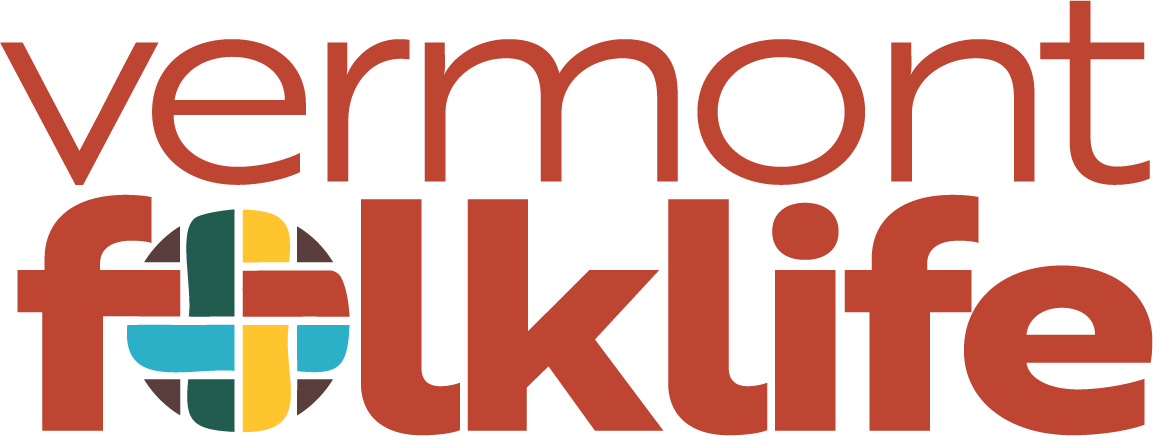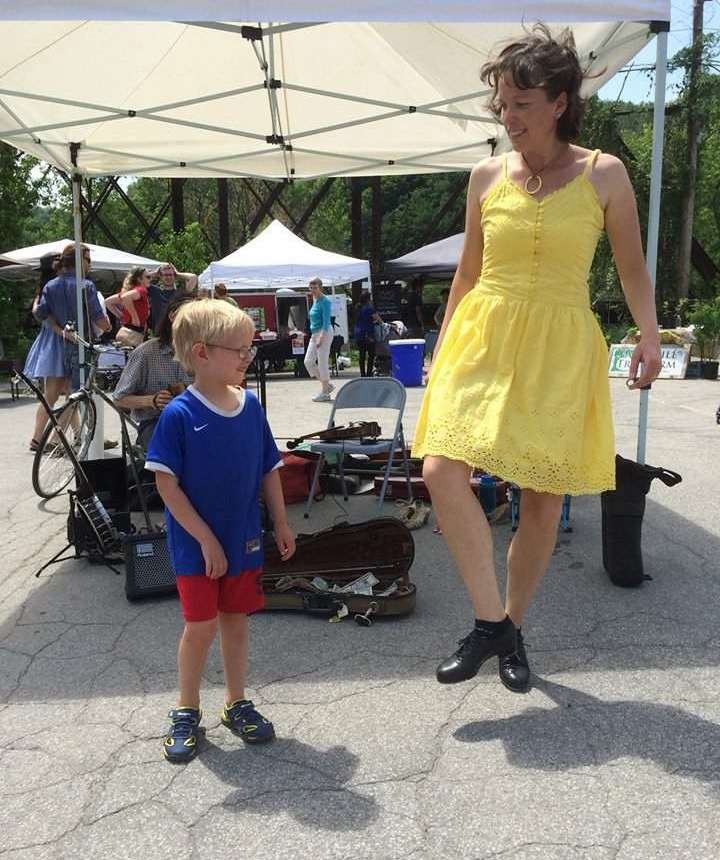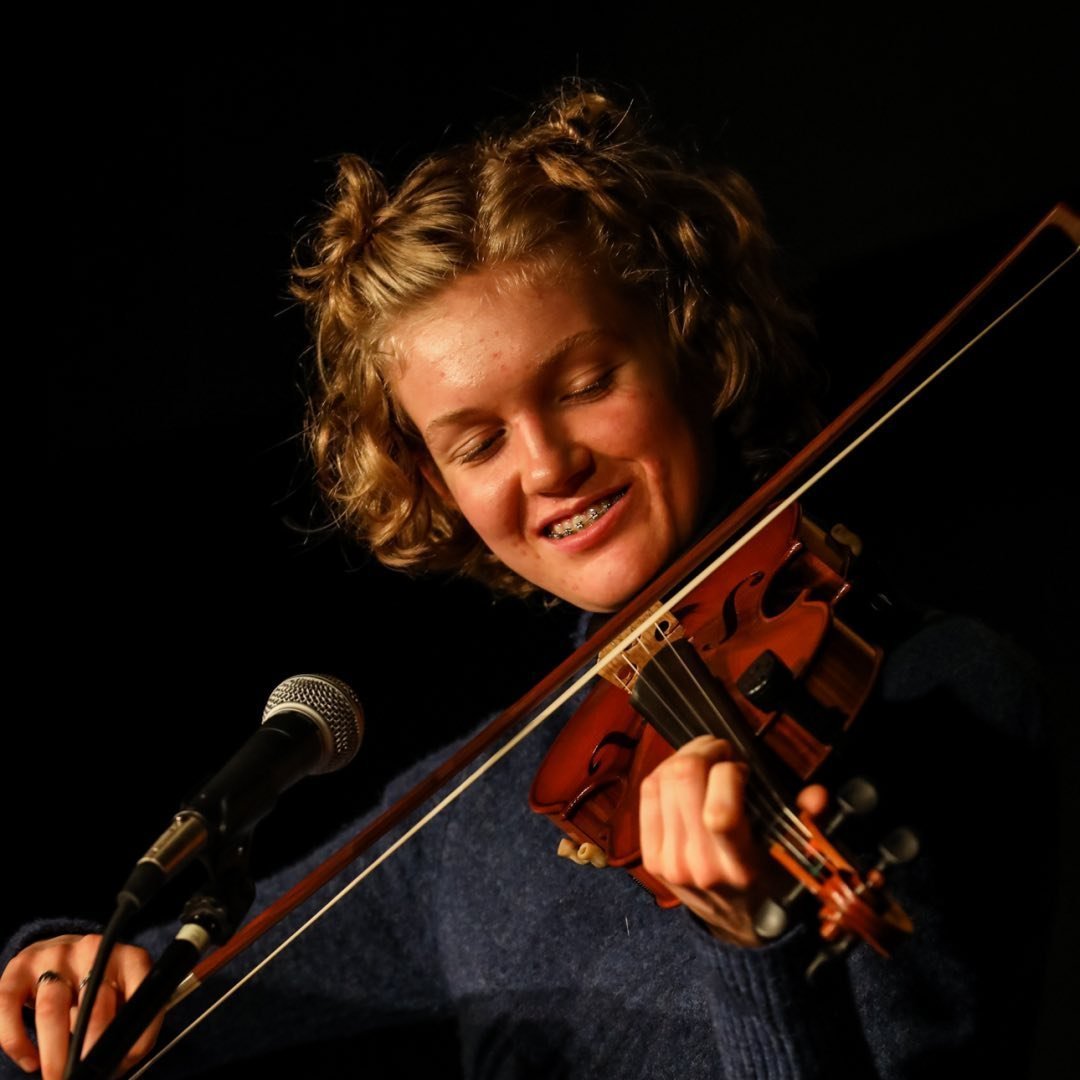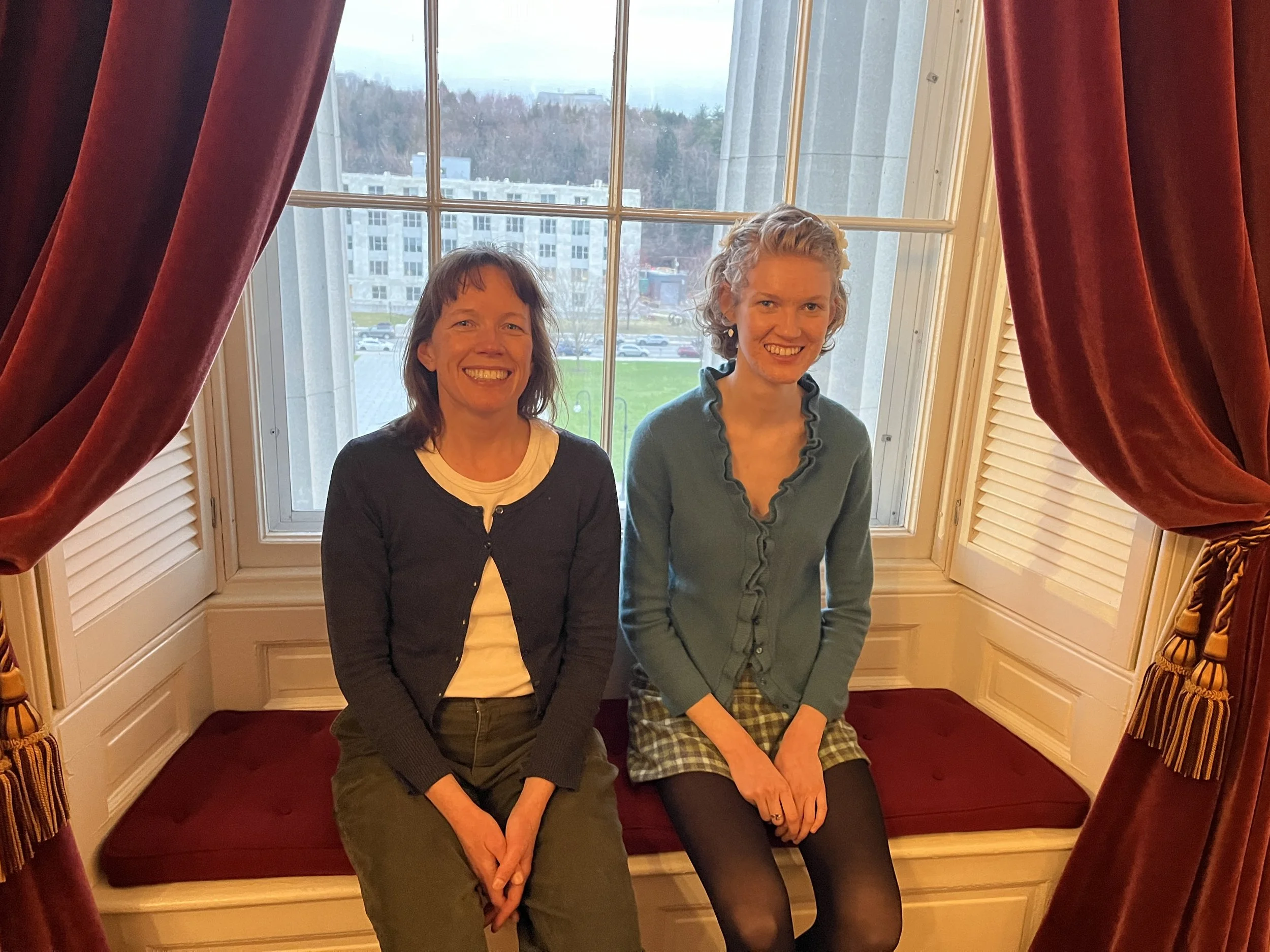Traditional Arts Spotlight: Scottish Fiddle and Dance
Mentor Artist: Joanne Garton
Apprentice: Fiona Stowell
Traditional Artform: Scottish Fiddle and Dance
The 2023-2024 cohort of the Vermont Traditional Arts Apprenticeship Program includes 18 collaborations between mentor artists and apprentices who are working together to keep traditional cultural expressions vital and relevant to the communities that practice them. With funding from the National Endowment for the Arts and a longstanding partnership with the Vermont Arts Council, Vermont Folklife initiated this program in 1992 to support the continued vitality of Vermont's living cultural heritage. In this ongoing series of Field Notes we’ll introduce you to some of this year’s program participants and the traditional art forms they practice. Vermont Folklife has been documenting the work of participants in the Apprenticeship Program since its inception. These interviews and audio-visual records are part of an ongoing collection in our Archive centered around traditional arts, music, and trades.
This note features interview excerpts, audio, and photos recorded at a recent site visit by VT Folklife staffer Mary Wesley.
Joanne step dancing with her son Liam
Joanne Garton: My name is Joanne Garton. I play fiddle, mostly from the Scottish tradition, but as you can probably hear from my accent, I am not Scottish. I grew up playing the violin starting around age six or so, very Suzuki/classically trained. But in parallel, I also grew up Highland dancing, which means I was listening to bagpipe tunes from age six on. All my family, both my parents and all my family from there are actually from England, so I don't have any Scottish family, but we would be over in the UK a lot visiting my English family. My mom was actually a Scottish country dancer. So between my own Highland dancing and her Scottish country dancing, hearing jigs and reels and pipe tunes was pretty normal, but it never occurred to me that I could play them on my fiddle. It took a long time for those dots to connect.
I was probably about 11 or so when I started trying to figure out how to play some of our dance tunes. I remember I chose Ghillie Callum to play, which is a pretty repetitive, circular tune, but it was a new thing to me. I was like, "Oh, I didn't know that music translated onto this instrument." But then I met other fiddlers, particularly those from the Boston area, and started playing more Scottish fiddle here and there. When I was 19 I decided I wanted to drop out of college and move to Scotland and play the fiddle! It was a very “ignorance is bliss” approach, like, just go to the pub and see what's happening and start learning tunes from whoever was around, whoever was generous enough to share.
Fiona fiddles!
So I've been playing for a couple of decades now. It's not going away. And I just keep playing and I don't do much Highland dancing anymore—from time to time, I do—but, I learned some Cape Breton step dancing a few decades ago, too, and that's very fun to share. It's much easier to do in a social setting. And sometimes I'll teach that to kids and adults—teach it to everyone. So that's the Scottish step-dancing that migrated over to Cape Breton and stayed alive quite vibrantly there.
Mary Wesley: And remind me where you grew up?
Joanne Garton: I mentioned my parents are from England. They moved to Ottawa, in their 20s, and I was born there in Ottawa. So actually, that's where I started Highland dancing. It's slightly more common in Ontario than here. But then we moved to the States, we moved to Connecticut when I was young, and I kept dancing there. So I grew up also in Connecticut, but then having family in England would go back to England. And then I eventually moved up to Montreal and lived there for a long time. So that was a big musical chapter. Both Irish music as well as Quebecois, and some Scottish, definitely found all the dancers and pipers there. And then I moved down to Vermont about 15 years ago and I've been in Montpelier this whole time.
The first time I understood there was a Scottish music community was when I went to the Ohio Scottish Arts School, which was an overnight camp, at the time at Oberlin College. And I went there for Highland Dance. But, one night there was a tornado warning, and the whole campus went down to the basement of one of these college buildings at Oberlin. And I was, I don't know, 15, 16, something like that. But there were a lot of younger kids there, too and then there were also people there for piping, drumming, fiddle, harp... And we were all put down in the lower level and the little kids were crying, and it was scary and it was dark. And, the fiddle instructor, who was Ed Pearlman, had brought down his fiddle, and he just started playing. And I just happened to be sitting near him and I just suddenly realized, like, there he was with this whole other community of Scottish musicians.
I think it just made a lot of sense to me. Maybe because I'd been listening to the music since I was so little, but the Scottish patterns, repertoire, the feel of it, just sit really well in my body. They make the most sense to me and it feels a little intuitive. Someone was just asking me yesterday, "Do you just remember all the tunes?" And I'm like, "Yeah, I guess so.” But it's like speaking, you know? You don't wonder what the word is each time. You just have them in you and so they keep coming out. So it's really that style that I've focused on and loved to share and play.
Joanne and Fiona at the Vermont State House, 2024
Fiona Stowell: I'm Fiona Stowell. I am almost 18 and I've been playing since I was four, so that's 14 years now, almost all of my life. Way more of my life playing than not playing! When I was two years old, one of the rare times we had Sesame Street playing on our TV, I saw Charlie Daniels playing "The Devil Went Down to Georgia” on Sesame Street, and I thought it was great. And I said, "I want to do that." And, my family has always listened to traditional music and music with fiddles in it, just like in my house my whole life. And so basically after that, every time I heard a fiddle, I said, "I want to do that."
So then for my fourth birthday, we went to the Vermont Violin Shop in Burlington and got me my first fiddle. And I was so excited to learn. My first teacher was Sarah Hotchkiss—she gave me an amazing foundation, primarily in old time music, but like a classic New England repertoire with a tiny bit of Celtic music. And I was with her until I was about 10 or 11. Then my brother and I started taking lessons with Pete Sutherland and we were his students and good friends up until last year. From Pete I kept playing, primarily old time music, but also branching out into Quebecois music and a little bit of Cape Breton, tiny bit of Irish and a little bit of Scottish music.
I like dabbling in all of the traditional music fiddle styles. I definitely feel like the most comfortable, especially rhythmically comfortable with old time music. Joanne was saying, she feels really comfortable with the Scottish rhythms—I don't! I don't have an instinct for it. So it's been really great practice to learn. But we've been unpacking my swoopy, old time, double-stop style together, which has been super helpful. And just learning to realize, technique wise, what I'm actually doing. And Joanne has helped give me the tools to change what I'm doing if I want to, for certain styles. So having more control to sound stylistically authentic has been really cool.
Mary Wesley: I love it. What made you venture out of your comfort zone with old time and try some Scottish stuff?
Fiona Stowell: I can't remember!
Joanne Garton: I remember.
Fiona Stowell: Yeah, what happened?
Joanne Garton: Well, this is my version, you might have a different version. So six or seven years ago, I was teaching at Young Tradition Vermont [Trad] Camp, and I taught Scottish dance and fiddle. And I just remember your mom coming up and being like, "Fiona just loves to dance." Like it was a problem! Like, “We can't get her to stop.”
Fiona Stowell: I loved your classes, it was so fun.
Joanne Garton: It was really fun. And she was clearly a dance addict. Your mom and I chatted about us playing and dancing together but you guys lived out in Warren, which is not that far, but, like, mentally, it's far. And now Fiona lives just right up the road, so it's pretty easy to get together in that sense. But I don't know why you picked Scottish as opposed to anything else. Do you know?
Fiona Stowell: Well, yeah, after I took that Cape Breton introduction class with Joanne at Trad Camp I went on to take Cape Breton, Highland, and then also Irish step dance with Heather Morris. I loved it. It was super fun. Eventually my fiddle commitments kind of got in the way of my dance commitments, but I loved it. It set a great foundation and gave me another appreciation for another side of the trad scene. And then, I don't know, I honestly can't remember how we ended up doing this together, but I think...we've kind of known of each other for a while. And I was like, "I really like Joanne. I'd like to learn some tunes from her.”
Joanne Garton: And then you moved right around the corner!
Fiona Stowell: Yeah, right around the corner, like a ten minute walk, which is so nice.
Joanne Garton: It makes a big difference. And I think that ease of being together in your community and your same town is an important part of folk music.
Mary Wesley: What are some of the elements of the Scottish music tradition that you're trying to pass on?
Joanne Garton: A couple things. So here in New England, we're blessed and cursed in that we have tons of musical styles all mixed together. Both Fiona and I play for contra dances, which is really a free for all in terms of what types of tunes you want to play in addition to its own contra dance culture. Like tunes that are basically, I would call them contra dance tunes—someone wrote them ten years ago, and now everyone plays it at the contra dance. So it's very easy to lose the plot of Scottish music within that. But that's okay because you're there for different reasons.
I think when we're focusing specifically on Scottish music, it's really fun with Fiona to be able to go into some of these older tunes to look at different settings of the tunes. Remember we had that conversation about who gets to tell the story of the tune? You know, if it's written down in a book, it was someone who could either write it or have it transcribed, and that's the story that's preserved. But that may not be the story at all. There may be so much more to say, particularly because some of these tunes are hundreds of years old and no one wrote down the story, or the person whose tune it was wasn't asked. So I think that's important too, to look back at some of the history and acknowledge how recent some of the history is and how much of the old history is likely lost.
Another thing that we work on is technique. Like, where is your bow? Is the hair flat on the string? Are you running parallel to the bridge? If you're not, did you mean to not? Or was that an accident? Look at your intonation—are your two E's ringing? The fourth finger on the A to the open E, you can do it, it's beautifully in tune. Now let's mess it up a little, now that you know how to get there, let's make it a little flatter. So you have this crunchier tune. When would you use that? I think it's important to recognize a lot of Scottish musicians were also classical musicians by day, not all by any means, but some. So to really go after that sometimes. Like, what is that weird note and how do I play it? And not be shy about breaking it down, doing the hard work of "I have to play this open string for the next 15 minutes for the next seven days to finally figure out how it works."
Fiona's been really great about diving into that a little bit. There's times to be sloppy and just have fun and see what happens. And then there's times to focus a little more. So I enjoy doing that a lot and trying to give yourself some variety in sound. I think you can kind of get in a train and follow that train till the end of your tune, or you can really swoop up and down a little more. And I enjoy that in some of my favorite Scottish players. There's a lot of Cape Breton players who have a very different, grittier, driving style and I love that too. So we get to turn that on and off as well.
Mary Wesley: Fiona, as someone who is now well into your life playing this music and actively participating and learning in so many different ways, what do you see when you look to the future? Do you have goals or visions for yourself?
Fiona Stowell: Well, I love playing and I'm not going to stop whatever I do!
Joanne Garton: The apprenticeship has helped put structure to something that we could have done anyway, but didn't. I think whatever way a person can find to put some structure to their time together is really helpful.
Often Fiona comes on a weekend and technically it's two hours, but we talk for the first hour or so, then we end up going longer than that. It's just really important to make that time where that's your focus. And then for us specifically, it's not just, “Oh, let's play a few tunes.” It's like, “Let's play these Scottish tunes.” It gives me a chance as a teacher to prepare something I really want to dig into. I usually try and give her a few options so you're not totally stuck in one groove. But I think that focus, saying not only are we playing fiddle together, but we're doing Scottish fiddle—we've done some dance too—is really important in a culture like ours where there's such a mix up of music. Otherwise you might lose that a little bit. And it's not the end of the world, that's the story of folk. Things change, but every now and then it really does feel good to go back to some of the older tunes and share why they're important to you. We'll see what happens from there.



